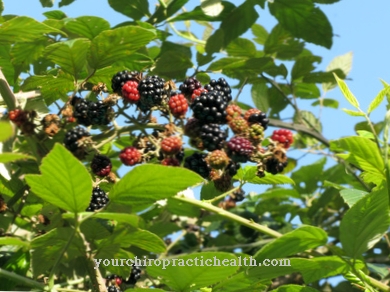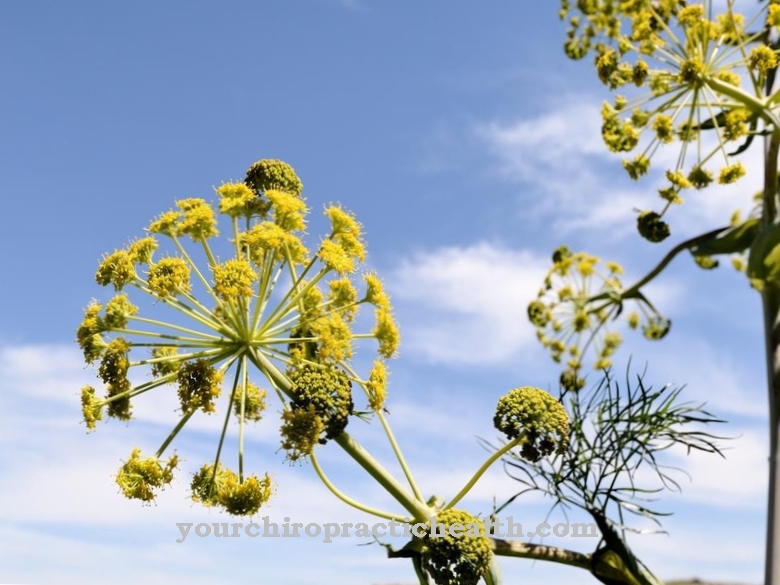The Bachbunge is a plant that only grows in the wild and reveals its preferred habitat by its name: it is mainly found near streams. In the Middle Ages it was a respected medicinal plant and it is still valued in naturopathy today.
Occurrence and cultivation of the Bachbunge

It is perennial and can be found all over Europe and now also in parts of Asia, North America and North Africa. With its lying and ascending shoots, the stream bunge can grow more than half a meter high. Their leaves are oval in shape, fleshy and rounded. When it blooms from May to September, it shows sky-blue flowers and then millimeter-sized fruit capsules.
According to the assumption of many botanists, their name part Bunge comes from these, as this word means tuber in Middle High German. It belongs to the plant family of the plantain family and belongs to the genus of honor prizes. With its robustness, it can sometimes be found in frost-free waters in winter.
Effect & application
In the Middle Ages, Hildegard von Bingen's Bachbunge was highly valued. She used the plant for hemorrhoids, indigestion or gout-like complaints. Nowadays it is used in naturopathy. Because of this low use, it can only be found as a wild plant and no cultivation has taken place. If you want to use it as a medicinal plant, you have to collect it yourself or plant it in your own garden.
There are very few products that contain plant components. These come from the field of naturopathic medicine or homeopathy in the form of drops or globules. According to the ideas of naturopathic medicine, the Bachbunge promotes digestion. Tinctures made from the leaves or self-made juices are said to have a laxative and urinary effect. In addition to tannins, bitter substances, essential oils and glycosides, vitamin C is one of the plant's ingredients. It is therefore very healthy and has a spicy taste that can give many dishes a special touch.
The leaves and flowers can be used. During the flowering period, the leaves acquire a more intense, bitter taste that is reminiscent of cress. Raw, the leaves go well with salad, in pesto, in herb quark or in a vinaigrette. When cooked or cooked, they are suitable for soups, stews, sauces, omelets or as a vegetable side dish. In the Middle Ages, the Bachbunge was an important ingredient in the Maundy Thursday soup, which is still known today, which should strengthen and cleanse the body after the winter.
Since the leaves are very fleshy, they are suitable for making self-pressed vegetable juices. Due to the wild growth, however, it is important to examine the harvested leaves for any larvae. In addition, it is advisable to collect them only in unfertilized locations and to rinse them carefully.
The flowers keep their blue color after drying and can serve as an edible decoration in teas or salads. Another use of the Bachbunge is as a pond plant. Located at the garden pond, it covers the edges of foil and supports the natural garden. It can also be used in freshwater aquariums or as a floating houseplant.
Importance for health, treatment & prevention
Although the Bachbunge was known as a medicinal plant in Germany in the Middle Ages, there are few scientifically proven statements about its effectiveness. The aucubin contained in it, a plant substance used to ward off insects, has shown a nerve-protective and blood-circulation-enhancing effect. The plant is not used in conventional medicine.
But folk medicine and naturopathy attribute many health-promoting effects to it: it is blood-purifying, sweaty and diuretic. Due to its expectorant effect, it is suitable for coughs, lung problems or asthma. Both in its raw state and in the form of tinctures or cooked side dishes, the Bachbunge promotes digestion and is suitable against loss of appetite and constipation.
Taking products made from fresh leaves is much more effective than taking tinctures. It is considered a home remedy for beautiful teeth. In combination with other wild herbs, its nutrients make it a recommendation against springtime tiredness. A hip bath with the decoction of the leaves is said to help against hemorrhoids. According to the writings of Hildegard von Bingen, the plant is suitable for alleviating excess acidity and supporting the intestine.
The Bachbunge extract is also an ingredient in some cosmetic products and can care for the skin. The leaves can be used externally, have an anti-inflammatory, antipruritic and wound healing effect. The tannins they contain are the reason that the leaves or a decoction made from them were used for skin diseases as early as the Middle Ages.
A soaked cloth should be placed on the affected areas to help with skin lichen, skin spots and age spots. This application was also used for rashes and ulcers. Side effects are not known due to the limited number of studies. Nevertheless, people with serious illnesses should clarify the use of Bachbunge as a remedy with their doctor. For pregnant women and people with a weak stomach, naturopathy recommends that they avoid the Bachbunge.













.jpg)

.jpg)
.jpg)











.jpg)